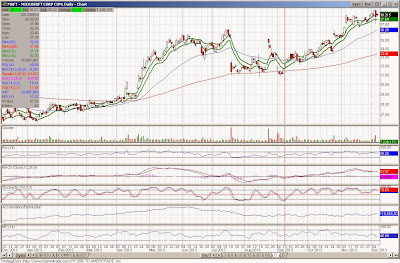The below article comes from New Scientist. And if you think that Bitcoin is just about money, think again. The technology around Bitcoin may be far more, for a lack of a better description at the moment, robust.
via New Scientist
via New Scientist
Bitcoin is money – people can use it to buy anything
from pizza to plastic surgery. The meteoric rise of the online currency
has caused everyone from financial regulators to law enforcement to the
US Senate to stand up and take notice.
But a growing group of computer scientists think this is just the
beginning. They are convinced that Bitcoin's real value is not in
providing the world with a currency free from government intervention,
but in the technology which underpins it, a secure system of verifying
transactions that they believe has the potential to vastly disrupt the
way we exchange goods and services around the world.
The secret to Bitcoin's rampant success is
the "block chain" – a secure digital ledger that tracks coins across
the internet. It records every single transaction of the currency, and
those transactions are then
mathematically verified by the computers of Bitcoin users
around the world. Anyone who holds bitcoins also has an exact copy of
the block chain, making it virtually impossible to create a forgery.
This eliminates the need for trusted third parties, like PayPal and
Visa, to take part in financial transactions.
Now the block chain is being applied
beyond the movement of money using a technique called "colouring"
bitcoins. It has the potential to transform commerce. Take the buying
and selling of real estate, for example. In a statement before the US
Senate Committee on Banking, Housing and Urban Affairs on 19 November,
Anthony Gallippi, CEO of Bitcoin payment firm BitPay, described how
co-opting the block chain could do away with the gaggle of fees and
legal manoeuvrings that usually accompany home sales.
"The biggest upfront costs for consumers
trying to buy a home are the closing costs, which include fees for
deeds, titles, stamps, title insurance, and other redundant tasks to
record the sale in different record books," Gallippi said. "Bitcoin can
replace thousands of dollars in closing costs with a single transaction
that costs 5 cents. By reporting deeds and titles on the block chain,
the information would be public record forever, for pennies, and
eliminate the need for title insurance."
Indelible record
Colouring bitcoins is a way of digitally
labelling a bitcoin or a fraction of one with information about a
transaction. When the labelled coin changes hands, it gets indelibly
recorded in the block chain. It's the equivalent of recording the sale
of a flock of sheep by writing a message to that effect on a $1 bill,
and giving that to the buyer – only with Bitcoin, that record is
mathematically confirmed nearly instantly by computers all over the
world.
A few researchers have already done this. Amos Meiri, a computer scientist with the social stock-trading firm eToro,
based in Cyprus, says he ran a proof of concept last year. He
transferred a Bitcoin, coloured to represent a sum of gold, through the
block chain. Through an organisation called Colored Coins, Meiri and others plan to launch a beta version of software that executes this process in the next few weeks.
"I'm able to issue one coloured coin which
resembles 1000 shares of stock, and sell it to you," Meiri, says. "When
I sell it to you I give you all the rights for voting and dividends
without paying a commission to stock markets or brokers. We basically
put another layer above Bitcoin. Instead of holding the currency, you'll
be able to hold and trade gold, Apple stock, your own car."
Others are building similar services. Mike Hearn,
a computer scientist based in Zurich, Switzerland, has developed an
application called PayFile which uses Bitcoin's block chain to keep
track of a user's downloads, and pay for bandwidth automatically as they
go. Hearn says PayFile is more a demonstration of what the Bitcoin
ledger can do, rather than a fully fledged commercial service, but says
it points to a future where the block chain will be used for all sorts
of transactions.
All I have to say is wow, if you cannot see the disruptive innovation aspects in that.



















































